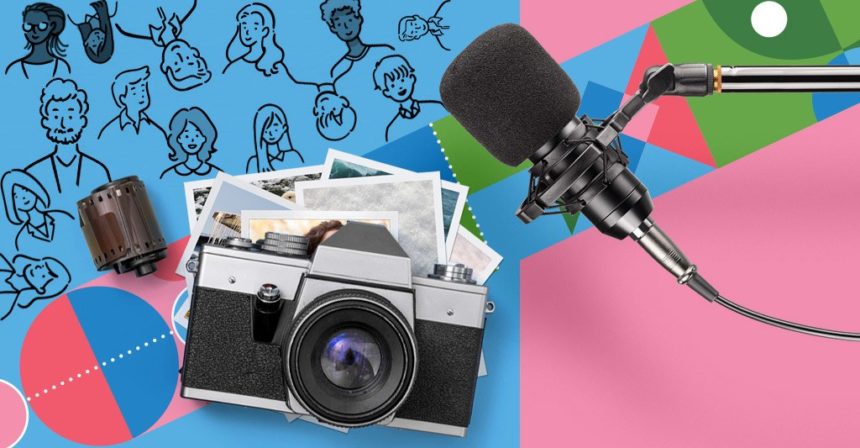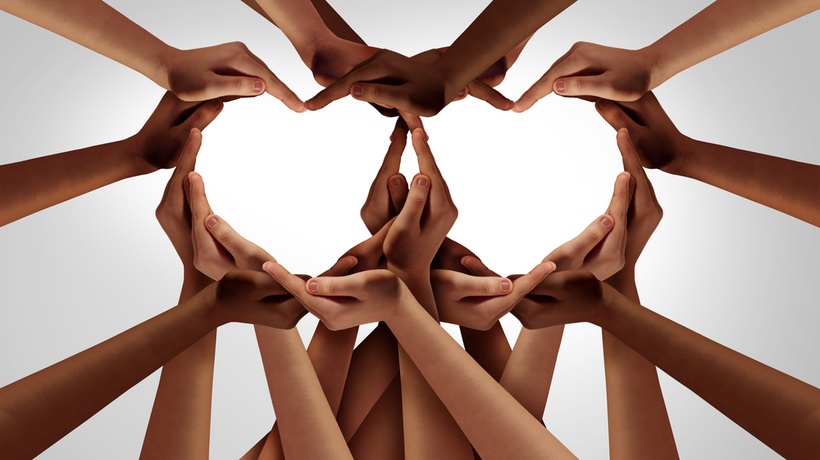Images Help Learners See Themselves In Content
When developing educational materials, images are a key element of the look and feel of the final product. Photos give the learner context about the learning, and supply necessary visual complexity and interest. When we look at photos and see a lack of representation, a clear message is sent about who and what is relevant and important in our work culture. The learner notices our choice to be inclusive. As individuals who design, develop, and deploy educational content, it is our responsibility to ensure that the images are reflective of the diverse population in which we work and live.
Ensuring that employees feel a sense of belonging within their organization plays a crucial role in the employee’s daily satisfaction and provides overarching benefits to the organization itself. A BetterUp research study notes that "high belonging was linked to a whopping 56% increase in job performance, a 50% drop in turnover risk, and a 75% reduction in sick days." Image diversity is an excellent opportunity to show our employees that we see them, we care about them, and we want them to feel that they belong. Studies also show that individuals have higher levels of understanding and lower levels of anxiety when the images accompanying their learning are reflective of what they look like [1]. While it is always our goal to ensure that learners get the most out of the education that we present to them, it is also our duty to make them feel comfortable, understood, and represented.
Considerations Before Selecting An Image
I recently had the opportunity to completely redesign mandatory compliance training within my organization. During the project, I realized how difficult it was to find diverse imagery that reflected the wide spectrum of learners. A search for "diverse" groups on typical stock image sites yields limited options. The images represented a few different races, but there was little to no diversity of age, gender representation, and body types (among other things). Most stock photo websites use models, and while the modeling industry has expanded its definition over the last decade of what a model should look like, models still maintain a standard look: slim, tall, and young. However, just because this has historically been the status quo does not mean that this trend should continue.
Before we start to select images for an eLearning module, it is imperative to consider the intention of the image. Are we simply checking off a box? What is the image trying to achieve? What does the inclusion of the image imply to the viewer? We must avoid performative or perfunctory displays of diversity and remain conscientious of our choices. For example, why should we only display individuals of Asian heritage in a module that is launched during Asian American and Pacific Islander heritage month? Or only include photos of individuals with visual impairments in a module about disability education? Instead, why not use these same photos in a compliance module? When we consider the role of diversity in images from the very start of our project, we ensure it is built into the design process, instead of an afterthought.
It is also critical that we consider and actively work against negative stereotyping. By definition, unconscious biases are "social stereotypes about certain groups of people that individuals form outside their own conscious awareness." These biases can be an unintentional but pervasive issue entrenched in our minds. For instance, are black men consistently portrayed as service workers? Are nurses depicted as young white women? Are women wearing niqābs being ostracized? Some of these concepts may, unfortunately, be present in our minds. Remaining thoughtful of these choices helps us to do our best to ensure that our unconscious biases are not reflected in the images we select.
Key Factors To Consider When Selecting Diverse Imagery
Below are a few key factors to consider when selecting diverse imagery. This list is not inclusive of all potential considerations but could be used as a starting point in your journey.
Age Diversity
It is vital to show a range of ages in imagery. This is typically one of the easiest elements to find on stock image sites. Ensure that depicted ages are realistic. For instance, one should consider how realistic it would be to depict a Chief of Surgery who appears to be in their twenties.
Race And Ethnicity
By 2050, the whole of what we now consider "minorities" will be the majority of the US population [2]. As a result, we should shift our mindset away from this concept of othering and instead ensure that our images are reflective of the diverse culture that exists in our current and continuously evolving reality. It is also important to consider factors like diversity in hair types and styles.
Body Types
Despite valiant efforts to push for diversity, few images of body-type diversity exist. Unless we specify a particular body type in the search, we are primarily shown photos of slim bodies of average height. Nearly one in three adults in the US are classified as "overweight", and the average height of a male or female is five feet nine inches and five feet four inches tall, respectively. Therefore, we are not showing out-of-the-box images when we reflect body and height diversity; rather, we are including images that reflect many of our learners.
Gender Or Sexual Identity
We should also consider displaying images of people along the gender spectrum. This can include those who present themselves in an androgynous way or who may identify as trans or nonbinary. Additionally, we should avoid sticking primarily to heteronormative images when we depict photos of families or couples, instead of showing the wide range of relationships.
Intellectual And/Or Developmental Disabilities
Roughly 6.5 million people in the United States have been diagnosed with an intellectual or developmental disability [3]. Depicting intellectually or developmentally delayed individuals in our images is an important and necessary step toward demonstrating inclusivity. We can include images of those who may visually present as having a disability. It also is important to keep in mind that the context of any text for the module can help to represent this. For instance, if the education discusses autism, an image of a parent and child could bring attention to this population without visual stereotyping.
Facial Differences
This is one element of diversity that is rarely available in stock images and one that should be included in the diversity conversation. Facial differences are defined as "anyone whose appearance, from the neck or above, has been affected by a congenital (from birth), acquired (after birth), or episodic (comes and goes) condition or syndrome." Per an interview with AboutFace, an organization committed to "promoting and supporting the societal acceptance of facial differences," member Christine states that she "believes that seeing individuals like her in an employer’s recruitment posters and training manuals would go a long way in creating a sense of belonging [4]."
People Using Adaptive Equipment And/Or Medical Devices
It is most common to find images of wheelchair users, but we can easily expand this to include gait trainers, hearing aids, prosthetic devices, canes, etc. We can also choose images representing medical devices, such as insulin pumps, continuous glucose monitors, feeding tubes, and colostomy bags. These are all commonly used devices that should be included.
How To Find Diverse Imagery
With this in mind, how do we find these diverse images? It can be difficult to navigate stock image websites. My key suggestion is to search like no one is watching. Even though it may feel uncomfortable to the searcher, stock image sites work best when using extremely specific search terms. Using search phrases like "Asian man in a wheelchair" or “"overweight person in the hospital" can often yield the most useful results. Is this awkward? Absolutely. But is it necessary? Without a doubt. I also recommend using the "Similar Images" function that most stock image sites offer. This is helpful in situations when you like the stock model or setting, but the image you have been viewing does not fit the need. Finally, consider the use of a more representative stock image website. In the last several years, there has been quite a bit of growth in the market of diverse and inclusive stock imagery, especially with sites specializing in images of historically marginalized communities. Sites such as The Gender Spectrum Collection, WOC in Tech, and Nappy offer a plethora of beautiful and diverse images specific to their representation goals. When you are planning your budget, it would be worthwhile to discuss the possibility of adding one or more of these sites to your repertoire.
Conclusion
Diverse imagery will create an increased sense of belonging and enhance learning effectiveness for your organization. Focus on one or two elements that you can organically incorporate into your design today. Remember: progress not perfection. With time, practice, and patience, the inclusion of image diversity will become a fundamental part of your routine.
References:
[1] The Effects of Gender Stereotypic and Counter-Stereotypic Textbook Images on Science Performance
[2] Minorities expected to be majority in 2050
[3] What is Intellectual Disability?
[4] Christine




![eLearning Industry's Guest Author Article Showcase [May 2023]](https://cdn.elearningindustry.com/wp-content/uploads/2023/05/eLIs-Top-Guest-Author-Articles-May-2023-.jpg)




